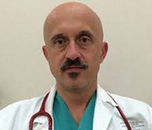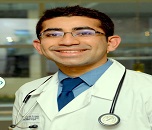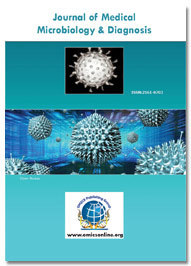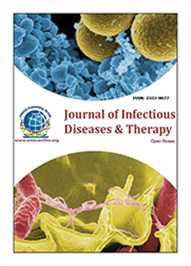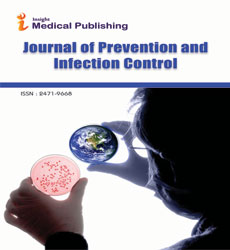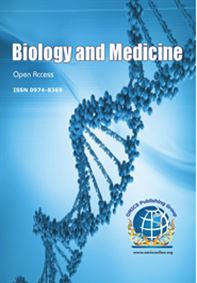Theme: “Exploring Novel Approaches and New Techniques in the field of Medical Microbiologyâ€
Med Microbiology 2017
ConferenceSeries Ltd invites all the participants from all over the world to attend Annual Medical Microbiology Summit & Expo during June 21-22, 2017 London, UK which includes prompt Keynote Presentations, Special Sessions, Workshops, Symposiums, Oral talks, Poster Presentations and Exhibitions.
Medical Microbiology is the study of disorders caused by organisms such as bacteria, viruses, fungi or parasites. Infectious diseases may be of water borne, food borne, vector borne, air borne in human beings as well as in plants and animals. Infectious diseases basically emphasize on the pathogenesis of the bacteria and their therapeutic measures, coalesce of branches of Microbiology especially Clinical and Diagnostic Microbiology which deals with the cure and prevention of the Infectious diseases. It represents an increasingly important cause of human morbidity and mortality throughout the world. Vaccine development is thus of great importance in terms of global health.
The conference attains significance when we look at the worldwide deaths due to Infectious Diseases. Tetanus (500,000), Measles( 1 million), HIV/AIDS(1 million), Hepatitis B( 1.1million), Malaria(2.1million), Diarrhoea(3.1 million), Tuberculosis (3.1 million), Respiratory Infections (4.4 million).
Who should attend?
- Microbiologists
- Bacteriologists
- Virologists
- Parasitologists
- Mycologists
- Pathologists
- Pharmacists
- Epidemiologists
- Health Care Professionals
Why to attend?
With members from around the world focused on learning about global trends on emerging infectious diseases and its advances in therapeutic and diagnostic market, this is your best opportunity to reach the largest assemblage of participants from the Infectious diseases community. This particular conference conduct presentations, distributes information, conducts meetings with current and potential scientists, make a splash with new drug developments, and receive name recognition at this 3 day event. World renowned speakers, the most recent therapeutic and diagnostic techniques, developments, and the Novel technologies and therapeutic measures for infectious diseases prevention and control are hallmarks of this conference.
Targetted Audience
- Directors, Board Members, Presidents, Vice Presidents, Deans and Head of the Departments
- Infectious Diseases Researchers, Scientists, Faculties, Students
- Infectious Diseases Associations and Societies
- Medical Colleges
- Pharmaceutical Companies and Industries
- Medical Devices Manufacturing Companies
- Drug Manufacturing Companies and Industries
- Laboratory Technicians and Diagnostic Companies
- Business Entrepreneurs and Industrialists
- Training Institutes
- Software Developing Companies
- Data Management Companies
For Scientific Sessions please go through the link:
http://medicalmicrobiology.conferenceseries.com/europe/call-for-abstracts.php
For Abstract Submission please go through the link:
http://medicalmicrobiology.conferenceseries.com/europe/abstract-submission.php
It is our greatest pleasure to welcome you to the official website of Annual Medical Microbiology Summit & Expo, that aims at bringing together the Professors, Doctors, Researchers, Clinicians, Educators, Program developers to provide an international forum for the dissemination of original research results, new ideas and practical development experiences which concentrate on both theory and practices in our Medical meetings. The conference will be held on June 21-22, 2017 at London, UK. The theme of the conference is,
“Exploring Novel Approaches and New Techniques in the field of Medical Microbiology”
Track 1: Advances in Medical Microbiology
The infectious disease epidemiology cluster covers local and international work on the epidemiology of occurring and re-occurring infections, global infectious diseases threats, detection and surveillance of diseases, development of vaccines and different prevention methods, medical trials, and the role of infectious pathogens within the pathogenesis of chronic non-communicable diseases and the forms of infections in the frame because of microorganism and their basic concept of contamination.
Track 2: Viral Infections
Viral infections are quite regular, maximum normally visible are the common cold, hepatitis, influenza, measles, rabies, Dengue, diarrhoea, AIDS , polio, smallpox, bloodless sores and genital herpes, examine of various approaches thru which viruses affect individuals are defined as viral pathogenesis. The scope of influence of the ailment/ infection resulting from the virus is its virulence. Whilst a virus invades into the host, the immune system start producing specific antibodies that binds to the virus thereby counter its virulence or kills them. Presence of such antibodies in blood serum detects if a host has ever encountered with any given virus previously. This is feasible most effective with the help of precise tests consisting of ELISA. Vaccinations shield towards illnesses, by augmenting the manufacturing of antibodies. Monoclonal antibodies, are basically specific to a single virus, are typically used for detection in fluorescence microscopy. Also, viruses are being used as gene vectors for the gene remedy of genetic disorders are also gaining momentum; In addition in phage remedy, use of the bacteriophages to come across bacterial infections and sicknesses was valuable. The latest approach of genetically engineered viruses in nano-biotechnology is visible as the unconventional approach to combat various diseases on the genetic stage.
Track 3: Bacterial diseases
Bacterial disease constitutes infections whose causing organism is a bacteria. In bacterial pathogenesis the microorganism infects and causes an infection in the host it invaded in. But, every microorganism is not pathogenic and that they have the potential to mount an infection. Microorganism additionally is living in host without harming it in a symbiotic relation and additionally helps in building a response towards the invading opportunistic bacteria from harming the host. Bacteria basically produce different types of toxins called the Exotoxins and the Endotoxins. Those compounds are soluble can be transported by means of either blood or lymph and causes cytotoxicity at far flung tissue sites. Microorganism additionally infects pores and skin, inflicting skin infections like Impetigo, Erysipelas and Cellulitis amongst numerous others. Urinary Tract Infections (UTIs) are in particular caused by Escherichia coli; Typhoid by means of Salmonella typhi. Bacterial infections are normally treated by way of antibiotics, that are similarly categorised as Bactericidal – which that kills the bacteria and Bacteriostatic – Antibiotics which inhibits bacterial growth by hindering their metabolism. Profoundly sizable use of such antibiotics contributes to the fast development of the antibiotic resistance in the pathogenic bacterial populations.
Track 4: Fungal Diseases
Mycology is a stream of biology which is associated with the study of fungi, their structure, their genetic and biochemical characteristics, taxonomy and their applications specially as a number one source of wine, safe to eat mushrooms, cheese, and their unfavourable effects with admire to their toxin or contamination. Fungi and other organisms inclusive of oomycetes and myxomycetes, often are economically critical, as the pathogenic fungi influences animals by means of causing illnesses like histoplasmosis. Several studies asserts that mushrooms have hypoglycemic, immune system-boosting, anti-pathogenic and oncolytic activity. Food spoilage prompted by way of fungi and yeasts may be extra compelling, extensively in innumerable food corporations specifically which might be acidic and/or have low moisture content. Mycotoxicology is a sub-department specializing in toxins produced with the aid of fungi, referred to as mycotoxins, for example aflatoxins. Fungi have a crucial function in environment as they ruin down and subsequently decompose useless plant life, animals and different organic compunds; while some damaging fungi assault living organisms ensuing in casualties to the wooded area industry. Fungi also are a discrete supply of food, fuel, pharmaceuticals and insecticides. Being eukaryotes, fungi are an essential tool in numerous biotechnological applications and in bioremediation.
Track 5: Parasitic Diseases
The discipline of biology which deals with the interaction of the parasite with their hosts is called Parasitology. Medical parasitology has it’s consonance with the pathogenic parasites affecting humans, clinical pathology and the reaction of the human’s immune system to counter these pathogens. It also deals with the distinctive processes of the infection and diagnosis, treatment, prevention & control. Moreover medical parasitology additionally contains of drug development, epidemiological studies and zoonosis. It is an interdisciplinary field, inveigled by Biochemistry, Immunology, Microbiology, and other applied existence sciences. Parasites inhabit the host of a remarkably excessive immuno-powerful immune system. Vector-borne infections are transferred through chunk of an infected arthropod, as an instance mosquitoes, ticks, bugs, sandflies and blackflies. Several parasitic worms developed resistance against other infectious retailers despite the fact that the mechanisms of resistance in protozoan parasites are not yet mentioned. About 50% of recognized malarial records are because of P. vivax. Recent advancements in modern-day diagnostic gear have ascertained new aspects for big improvements in parasitic detection.
Track 6: Microbial Biochemistry
Microbial biochemistry incorporates of biochemical reactions in microbial growth, different mechanisms/ techniques of pathogenesis required in inflicting contamination/ illnesses in the host. It consists of studies related to of growth, cell shape, metabolism, functions and the interactions of biological macromolecules, like carbohydrates, proteins, Fatty Acids and Lipids and nucleic acids of microbes; which cater the skeletal component and foundation of capabilities affiliated with lifestyles. Biochemical research of microbes is important in the mode of their action. Post genomic analyses, mechanisms, & replication, integrating plasmid functions, conjugation structures and regulatory network are the key factors that play a critical function in metabolism of microbes. While monomers are co-connected to synthesize a polymer, dehydration takes place regularly ensuing in assembly of various macromolecules in tons large complexes.
Track 7: Diagnostic Microbiology
Biotechnology is an increasingly essential place for technology, and contributes to design and shipping of recent healing pills, the development of diagnostic retailers for medical exams, and the beginnings of gene therapy for correcting the medical symptoms of hereditary disorders. Molecular Diagnostic techniques use stronger molecular sequencing equipment at the side of modern records technology and bioinformatics experts to allow quicker and greater powerful infectious disease prevention. These techniques have emerged as increasingly incorporated into the practice of infectious ailment epidemiology. The complexity of diseases puts forward a need for improvement of latest and novel diagnostic techniques or techniques for predicting the infections as a result of microorganisms. Diagnostic microbiology is a specialty within the sciences which focuses on applying microbiology to medical application. Similarly to being concerned with the identification of a disorder-inflicting organism, diagnostic microbiology can also be a part of modifying a treatment plan. Microbes including bacteria, protozoans, and fungi play a vital factor in many disease processes. The various laboratory techniques like microscopy, immunological assessments, radiology, biomarker tests, ELISA, serology checks, vaccine vectors are the primary diagnostic tests which are currently in use. Many microbes have developed resistance to medications. Hence, it's far essential for the scientists to give smarter methods of diagnosing those microbes and their pathogenic mechanisms.
Track 8: Antimicrobial Agents
Antimicrobials kill and/or inhibit the growth of microbes and are organized below antibacterial, antiviral, antifungal and antiparasitic relying on their adversarial individual. Antibacterial compounds treat bacterial infections and therefore are precised as antibacterial, compounds that deal with viruses are called as antivirals and compounds which are used for harmful fungi and parasites are named as antifungals and antiparasitics respectively. The toxicity of these compounds mostly antibacterials towards human and analogous animals are very less. Antimicrobial pesticides is profitable for the economic system via the managed growth of microorganisms because of disinfection, decrease in growth thereby protects numerous industrial methods, surfaces and water from contamination and spoilage due to these microorganisms like viruses, fungi, bacteria, protozoa and algae. Antibacterial antibiotics are classified as broad-spectrum and/or narrow-spectrum depending on the scope of bacterial contamination.
Track 9: Microbial Immunology
Microbial Pathogenesis is the subject of the molecular mechanisms utilized by microbes to cause sickness in people and animals. Viral, protozoan, fungal and bacterial pathogens have evolved a huge sort of methods to establish themselves within the host and benefit nutrients, which also can cause harm and illness. Different mechanisms of pathogenesis include host defence evasion. To understand the complicated techniques utilized by microbial pathogens, microbiologists employ all of the tools of cutting-edge molecular biology, genetics, virulence elements, drug interactions, biochemistry and biophysics. Expertise how microbes cause ailment is frequently the first step towards the improvement of recent vaccines and therapeutics.
Track 10: Microbial theory of cancer
Oncovirus, synonymously known as a 'tumour virus', is an endemic that may reason most cancers. An oncolytic virus basically infects the host's cancer cells and destroys them, inflicting tumour destruction, and is thus referred to as a 'most cancers killing virus'. The cancers bacteria are bacteria which are recognised or assumed to create cancers. While most cancers-related bacteria have been considered to be opportunistic (i.e., infecting wholesome tissues after cancer has already started itself), there is a few evidence that bacteria may be at once carcinogenic. Certain parasitic worms that infect the human body also can raise the chances of growing some sorts of cancer.
Track 11: Microbial Biofilms
Biofilms are the cluster of microorganisms enclosed in an extracellular polymeric matrix. The complicated system of attachment has diverse traits. It's a very complex process with regulated through growth medium, substratum and surface of the cell. Their position in infectious illnesses has led to their multiplied importance in medical microbiology. More and better information and expertise about biofilms will result in novel and pivot control of biofilms with progressed biofilm control.
Track 12: Multi-pathogen Infections
Multiple pathogens once in a while coexist ensuing in polyparasitism, which leads to augmented infectivity and diseased circumstance, changed pathogen load, and emphasis in pathogenesis. As an instance, Burkitt's lymphoma is generally determined in regions with high malarial transmittance and it is said that malaria-prompted immune reaction is related with the evolution of lymphomas. These organisms are known as opportunistic infectious agents, and are reason for high morbidity and mortality costs. HIV is one of the opportunistic organisms with high ability to have interaction with other infectious organisms like parasitic, viral, fungal, and bacterial agents.
Track 13: Infectious Diseases in Plants
Plant diseases create a critical risk to food security, food safety, biodiversity, national economies and the rural environment. Infectious plant diseases are resulting from a pathogenic agent which includes a fungus, virus, bacterium, mycoplasma, viroid, nematode, or parasitic flowering plant. An infectious agent is capable of reproducing inside or on its host and spreading from one inclined host to any other. The infections are due to virus, fungi, nematodes, bacteria and parasites. These infection inflicting agents causes blights, canker, wilts, rots and rusts.
Track 14: Advancements in Vaccines
A vaccine is an inactivated shape of microorganism or virus which is injected in the body to simulate a real infection. Due to the fact the injected microbes are 'dead,' they do not motive a person to end up unwell. Rather, vaccines stimulate an immune reaction by using the body a good way to combat off that sort of infection. It covers infectious disease objectives and non-infectious ailment targets. To generate vaccine-mediated protection is a complex mission. Currently the vaccines are developed empirically, with less or zero expertise on how they set off the immune system. Their early protecting efficacy is usually conferred via the induction of antigen-particular antibodies. However, there's more to antibody-mediated protection than the peak of vaccine-prompted antibody titers.
Track 15: Veterinary Microbiology
Animal Infectious diseases are a critical risk to human health, since the emergence of human illnesses is ruled through zoonotic pathogens. Veterinary vaccines are to enhance the fitness and welfare of animals, elevates production of livestock in a cost-effective way, and prohibits animal-to-human transmission from domestic as well as wild ones. Numerous vaccine kinds can be differentiated among the 2nd-generation Veterinary vaccines, relying whether they're live or inactivated, in step with the stress of rabies virus used and the characteristics of the cellular substrate chosen for viral replication.
Tracks 16: Nanotechnology in Medical Microbiology
Microbial Nano-biotechnology is still an incipient field, yet it is step by step picking up prominence, particularly with the programmed parallel arrangement of viral building blocks is in the hand's compass after the recent advancement of chip-based DNA control to the cell-refined methods. The specialists are very nearly finishing the era of infection based nanoparticles, multi-layered exhibits and crossover infection systems by consolidation of quantum dots and carbon nanotubes (CNTs). They are likewise investigating the utilization of viral like protein frames to make novel materials that can be securely and expense viably utilized for biomedical applications, for example, biomedical imaging. Present pattern in Nano-biotechnology is certain to take viral Nano-biotechnology higher than ever. These amazing and huge methodologies of life-sciences in relationship with science, material science and building have turned into the establishment of present day bio-physical prescription and are opening a wide range of methodologies in all these fields.
MARKET ANALYSIS REPORT
Med Microbiology 2017 welcomes attendees, presenters, and exhibitors from all over the world to London, UK. We are delighted to invite you all to attend and register for the “10th Annual Medical Microbiology Summit & Expo" June 21-22, 2017 in London, UK.
The organizing committee is gearing up for an exciting and informative conference program including plenary lectures, symposia, workshops on a variety of topics, poster presentations and various programs for participants from all over the world. We invite you to join us at the Med Microbiology 2017, where you will be sure to have a meaningful experience with scholars from around the world. All members of the Microbiology 2017 organizing committee are looking forward to meet you in London, UK.
For more details please visit- http://medicalmicrobiology.conferenceseries.com/europe/
Importance & Scope:
Microorganisms serve as specific agents for large scale chemical transformations, especially variety of geochemical changes. Winogradsky and Beijerink proved that microbes play important role in the Carbon cycle, Nitrogen cycle, Sulphur cycle etc. They also proved the role of microorganism in the fixation of atmospheric nitrogen fixation.
Medical Microbiology is a division of medical science involved with the aversion, diagnosis and treatment of infectious illnesses. Also, this discipline of medical science is related with clinical applications of microbes for the improvement of health. There are four types of microorganisms that cause infectious disease: bacteria, fungi, parasites and viruses, and one form of infectious protein, known as prion.
A medical microbiologist studies the traits of pathogens, their modes of transmission, mechanisms of infection and growth. Different tasks may encompass the identification of potential health dangers to the network or tracking the evolution of doubtlessly virulent or resistant strains of microbes, inculcating the network and availing in the layout of health practices. They will additionally avail in obviating or controlling epidemics and outbreaks of health sickness.
Microorganism helps in several industries like medicine industry, jute industry. Hormones, Vitamins, Vaccines are also manufactured from microorganisms. They also used in Recombinant technology, cell fusion technology etc.
Medical Microbiology Techniques
The worldwide market for medical microbiology techniques came to $9.8 billion income in 2015. The market ought to reach almost $12.3 billion by 2020, expanding at a CAGR of 4.6% from 2015 to 2020.
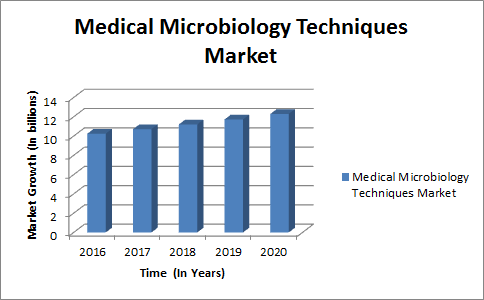
Nosocomial Infections Market:
The worldwide market for Nosocomial infections were about $16 billion in year 2010. This market is assessed to be around $18.3 billion in the year 2011 and is anticipated to reach $25.6 billion by 2016 at a CAGR of 7.0% for five year time span. Hospital acquired contaminations are viral, bacterial, or contagious diseases that patients get after they are admitted to a hospitals or nursing homes.
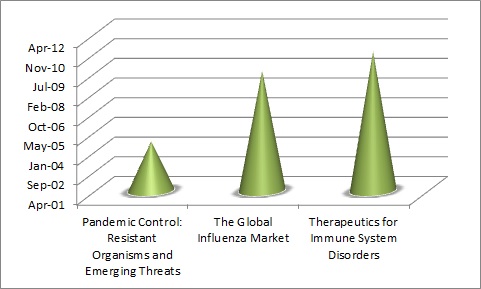
Antiviral Chemotherapy Market:
The worldwide oncolytic immunotherapies showcase came to $30.8 billion in 2012. This market is relied upon to develop to about $34.3 billion in 2013 and $67.9 billion in 2018 with a CAGR of 14.7% over the five-year time frame, 2013 to 2018.

Global Markets for Vaccine Technologies:
Worldwide income for immunization advances in vaccine technology was about $31.8 billion in 2011. This market is required to increment from $33.6 billion in 2012 to $43.4 billion in 2017 at a CAGR of 5.3%.
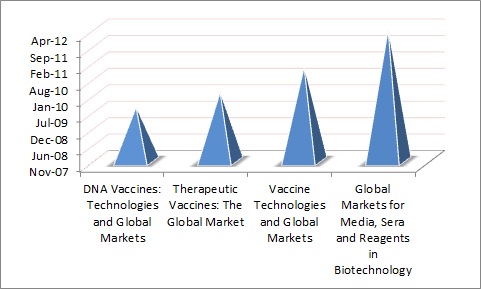
Major Societies of Microbiology:
American Society for Microbiology (ASM), Association of Medical Microbiology and Infectious Disease, Belgian Society for Microbiology, Australian Society for Microbiology, Environmental Microbiology & technology Association, French Society for Microbiology, German Society for Hygiene and Microbiology, European Society of Clinical Microbiology and Infectious Diseases (ESCMID), Union for General and Applied Microbiology, Welsh Microbiology Association, World Health Organisation, Irish Society of Clinical Microbiology, Italian Association for Clinical Microbiology, Society for Applied Microbiology, Italian Society of Microbiology, Microbiology Society, Nordic Society of Clinical Microbiology and Infectious Diseases (NSCMID), Scottish Microbiology Association, Society for Industrial Microbiology and Biotechnology, Infectious Disease Society of Ireland and International Society for Infectious Diseases.
List of Microbiology Universities in London:
· Imperial College London
· University College London
· King's College London
· London School of Hygiene & Tropical Medicine
· Queen Mary University of London
· St George's University of London
· City University London
· Birkbeck University London
· University of London Institute of Education
· University of London Royal Veterinary College
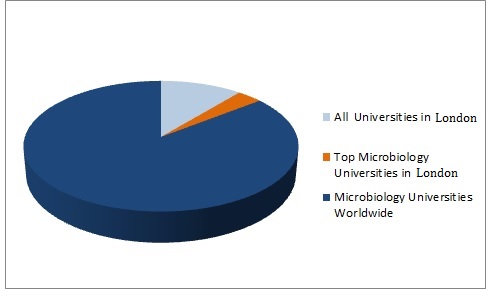
Why it’s in London, UK?
London is the capital city of England and the United Kingdom. It is the most crowded locale, urban zone and metropolitan region in the United Kingdom. Situated on the bank of River Thames, London has been a noteworthy settlement for two centuries, its history backtracking to its establishing by the Romans, who named it Londinium. London is a main worldwide city, with qualities in expressions of the human experience, trade, training, diversion, form, fund, social insurance, media, proficient administrations, innovative work, tourism and transport all adding to its noticeable quality. It is one of the world's driving budgetary focuses and has the fifth-or 6th biggest metropolitan range GDP on the planet relying upon estimation. London is a world social capital. It is the world's most-gone to city as measured by universal landings and has the world's biggest city air terminal framework measured by traveler movement.
London's 43 colleges shape the biggest grouping of advanced education in Europe. In 2012, London turned into the principal city to have the Summer Olympic Games thrice. London has an assorted scope of people groups and societies, and more than 300 dialects are talked inside its limits. It is a noteworthy focus of advanced education instructing and research and its 43 colleges shape the biggest centralization of advanced education in Europe. London contains four World Heritage Sites: the Tower of London; Kew Gardens; the site involving the Palace of Westminster, Westminster Abbey, and St Margaret's Church; and the memorable settlement of Greenwich.
A Unique Opportunity for Advertisers and Sponsors at this International event: http://medicalmicrobiology.conferenceseries.com/europe/sponsors.php
Target Audience:
The intended interest group would incorporate microbiologists, immunologists, virologists, pathologists, doctors, epidemiologists, Primary Care Practitioners (Family Practice, Internal Medicine and General Practice), Physician Assistants, Laboratory Professionals, Nurse Practitioners, and healthcare experts keen on screening, treating and directing patients with respect to microbial contamination and Infectious diseases.
Future Projections:
Microbiology has colossal extension and a brilliant future. Understudies who are seeking after their profession as a Microbiologist, brilliant open doors anticipate for them. A portion of the best logical research occupations are in accessible in the field of Microbiology.
The developments in this field has given the capacity to person to see small imperceptible living beings of unimaginable size under 0.2 micron or even less and to concentrate everything about it. The extent of microbiology is gigantic because of its capacity to control every basic purpose of many fields like Medical, Diary, Pharmaceutical, Industrial, Clinical, inquire about, water industry, horticulture, nanotechnology, substance and so forth.
A medical microbiologist studies the traits of pathogens, their modes of transmission, mechanisms of infection and growth. Different tasks may encompass the identification of potential health dangers to the network or tracking the evolution of doubtlessly virulent or resistant strains of microbes, inculcating the network and availing in the layout of health practices. They will additionally avail in obviating or controlling epidemics and outbreaks of health sickness.
Conference Highlights
- Advances in Medical Microbiology
- Viral Infections
- Bacterial Diseases
- Fungal Diseases
- Parasitic Diseases
- Diagnostic Microbiology
- Antimicrobial Agents
- Microbial Biochemistry
- Microbial Immunology
- Microbial Theory of Cancer
- Microbial Biofilms
- Multi- Pathogen Infections
- Infectious Diseases in Plants
- Advancement in Vaccines
- Veterinary Microbiology
- Nanotechnology in Medical Microbiology
To share your views and research, please click here to register for the Conference.
To Collaborate Scientific Professionals around the World
| Conference Date | June 21-22, 2017 | ||
| Sponsors & Exhibitors |
|
||
| Speaker Opportunity Closed | Day 1 | Day 2 | |
| Poster Opportunity Closed | Click Here to View | ||
Useful Links
Special Issues
All accepted abstracts will be published in respective Our International Journals.
- Biology and Medicine
- Journal of Medical Microbiology & Diagnosis
- Journal of Infectious Diseases & Therapy
Abstracts will be provided with Digital Object Identifier by









